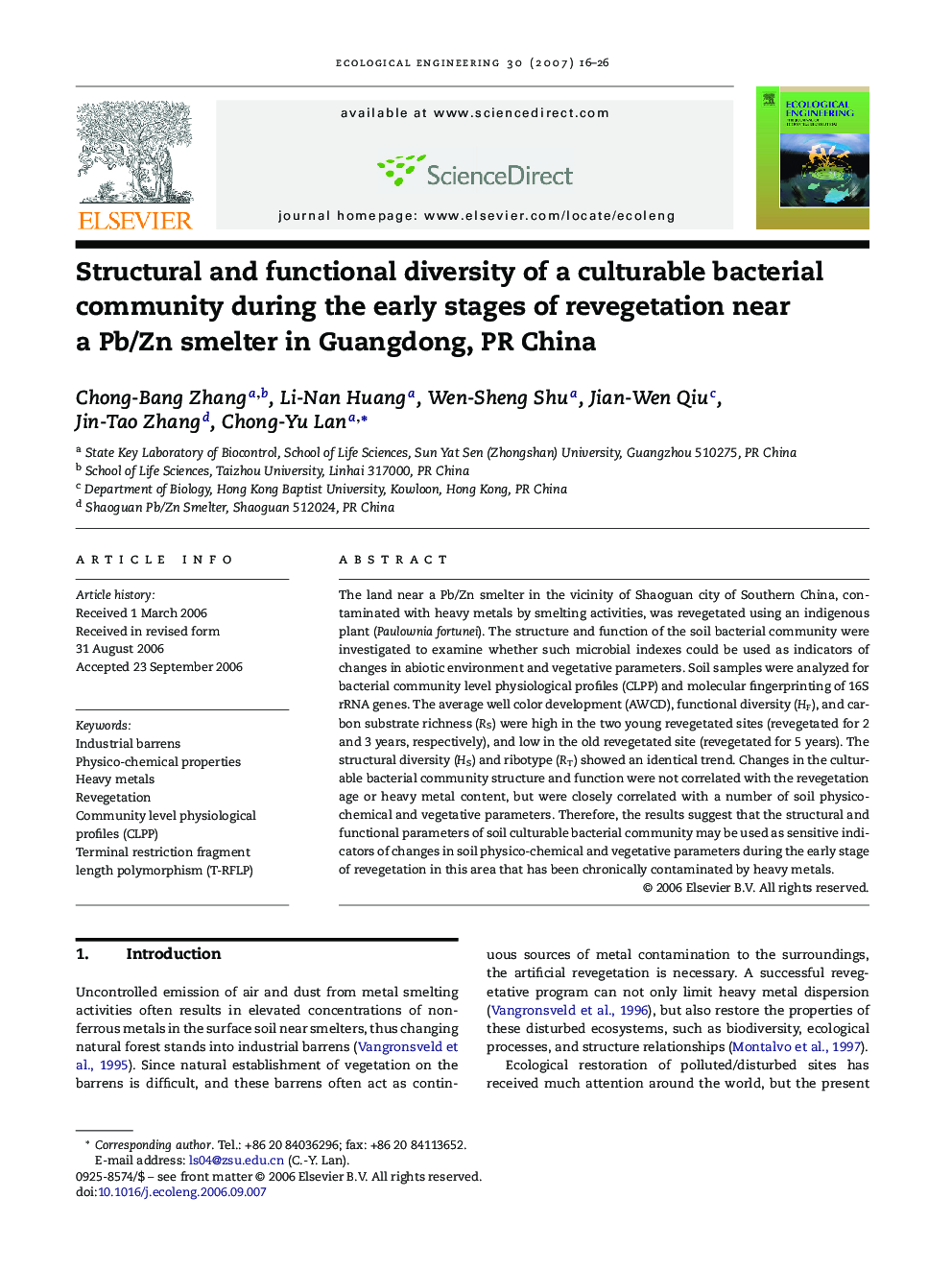| Article ID | Journal | Published Year | Pages | File Type |
|---|---|---|---|---|
| 4391109 | Ecological Engineering | 2007 | 11 Pages |
Abstract
The land near a Pb/Zn smelter in the vicinity of Shaoguan city of Southern China, contaminated with heavy metals by smelting activities, was revegetated using an indigenous plant (Paulownia fortunei). The structure and function of the soil bacterial community were investigated to examine whether such microbial indexes could be used as indicators of changes in abiotic environment and vegetative parameters. Soil samples were analyzed for bacterial community level physiological profiles (CLPP) and molecular fingerprinting of 16S rRNA genes. The average well color development (AWCD), functional diversity (HF), and carbon substrate richness (RS) were high in the two young revegetated sites (revegetated for 2 and 3 years, respectively), and low in the old revegetated site (revegetated for 5 years). The structural diversity (HS) and ribotype (RT) showed an identical trend. Changes in the culturable bacterial community structure and function were not correlated with the revegetation age or heavy metal content, but were closely correlated with a number of soil physico-chemical and vegetative parameters. Therefore, the results suggest that the structural and functional parameters of soil culturable bacterial community may be used as sensitive indicators of changes in soil physico-chemical and vegetative parameters during the early stage of revegetation in this area that has been chronically contaminated by heavy metals.
Keywords
Related Topics
Life Sciences
Agricultural and Biological Sciences
Ecology, Evolution, Behavior and Systematics
Authors
Chong-Bang Zhang, Li-Nan Huang, Wen-Sheng Shu, Jian-Wen Qiu, Jin-Tao Zhang, Chong-Yu Lan,
